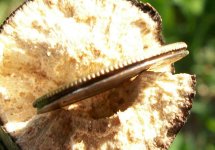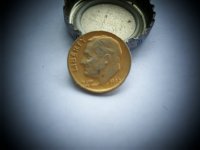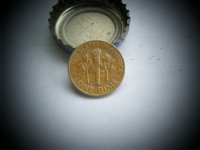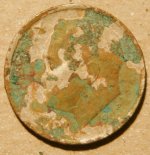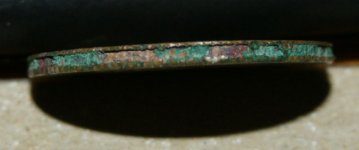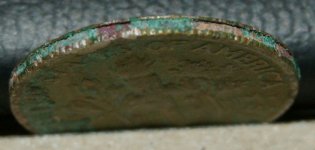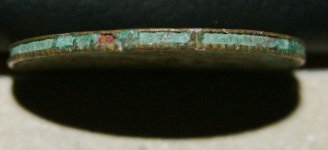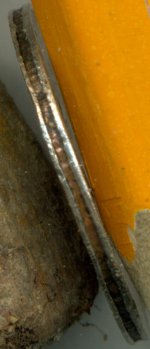You are using an out of date browser. It may not display this or other websites correctly.
You should upgrade or use an alternative browser.
You should upgrade or use an alternative browser.
Dime error
- Thread starter sjv
- Start date
I know what your thinking. Cut with a lathe or something. the rim teeth are not choppy and the other part isn't shredded. Could be a or Planchet error. Can't find anything close to it.Could be worth alot, no? <:
Look at the front and back:
Look at the front and back:
Attachments
Jason in Enid
New member
Never seen that kind of thing before. Very odd.
coinnut
New member
For it to be a legitimate mint error, there would have to be evidence that it could have actually happened in the minting process. Since the blanks (planchets) are stamped out, and then go to a machine (upsetting mill) that rolls the rim, it would have to be in the rimming of the coin that it occures. Once a rim is applied, it would go to the dies which would stamp the obverse and reverse designs along with the reeding that is in the collet. If it isn't capable of being done there, I doubt that it was a mint error. Hopefully someone with error coin experience can tell us some more. This is just my guess on how I would think it would happen.
coinnut
New member
It looks like a groove that was made for someone to tie a string around to try and retrieve it after it was used in a phone/vending machine.Maybe:huh:
Very possible :yes: You could put a thin wire around it and make a handle so you could hold it. A similar device was made for the old skee ball machines at the amusement parks. The guy who would fix them would have one of them dime sized tools so he could start the machine without spending a dime each time lol
coinnut
New member
Here you go Sal....so far it's worth $1.61 lol but that is just on fleebay.
http://cgi.ebay.com/unc-1985d-error-roosevelt-dime-mint-set-LOOK-/26070243370:eyebrow t=Coins_US_Individual&hash=item3cb31371ac
t=Coins_US_Individual&hash=item3cb31371ac
Keep track of where it ends up. If it were rare, the big boys would bid on it.
http://cgi.ebay.com/unc-1985d-error-roosevelt-dime-mint-set-LOOK-/26070243370:eyebrow
Keep track of where it ends up. If it were rare, the big boys would bid on it.
Hey Guys! The coins been in a roll for a long time. See the toning. One layer is reeded and the other is plain and slightly thinner. I'm old enough to remember the coin and string trick and everyone I've see was done by drilling a small hole and tying the line through the coin. Also the majority of them were Quarters not dimes. Who would go through all the trouble on a phone call, that's if it even would work on a telephone. Also, It's clearly been in a roll or something due to the toning. I have a book called Price guide to MINT ERRORS by Alan Herbert. It's the best error coin book I've seen. I'll look in the Planchet section or the rim section and see the process. >:\ Don't rain on my parade debunker's. :hammer: lol lol
pulltabsteve
New member
I too have a dime just like yours but mine has a pits on the face and the back is not touched at all almost like leaving all of the silver intact. I have some photo's so i will post later. I am thinking that the dime i have is more of a error caused by a student in a chemistry lab using an electrolysis technique to strip the copper away leaving the Nickel behind. Only because of the way the pits appear to be something a liquid would disolve. Very strange, i was wondering if anyone else had something like this before.
Napa Steve
New member
I would guess it is electrolysis from some other chemical or metal
